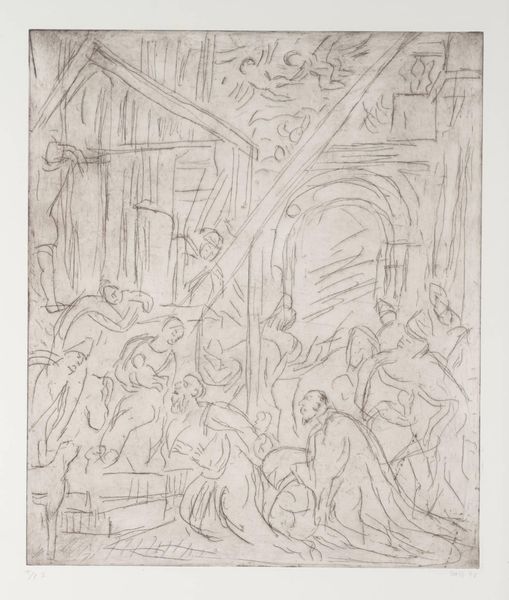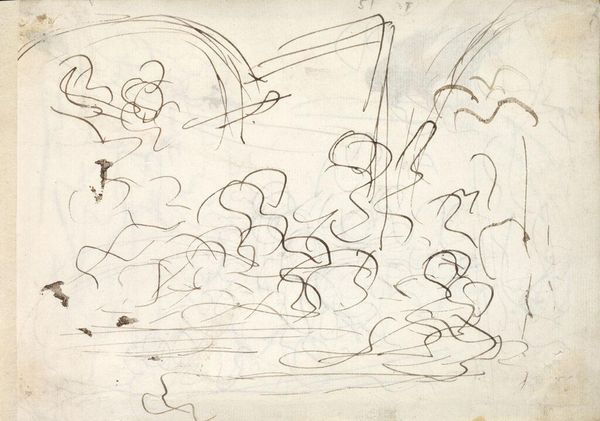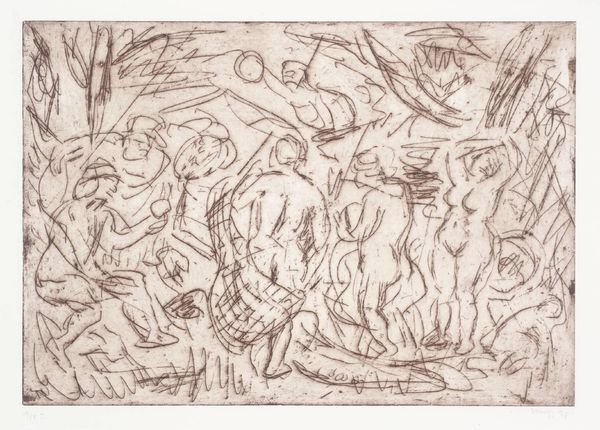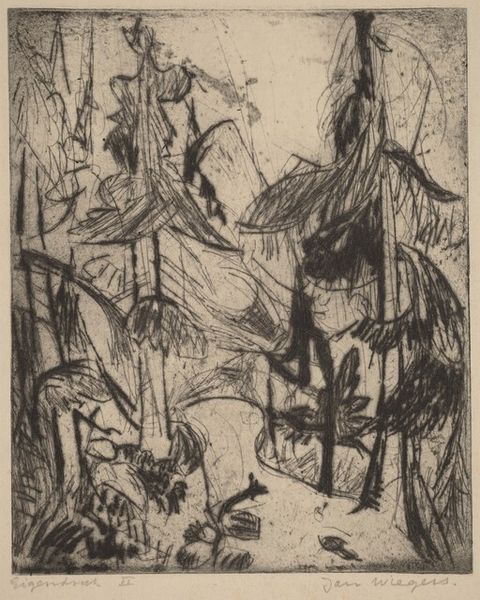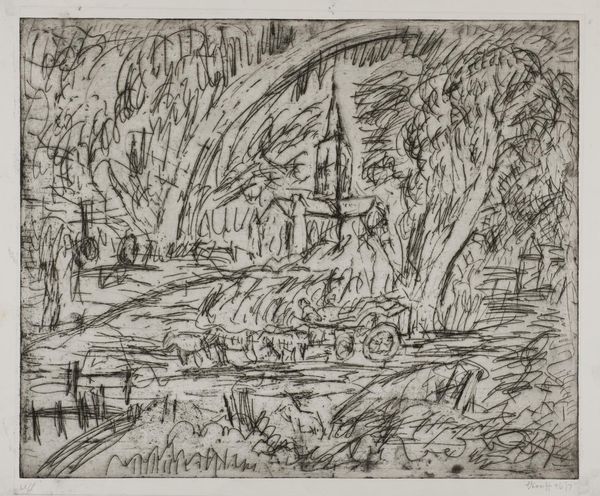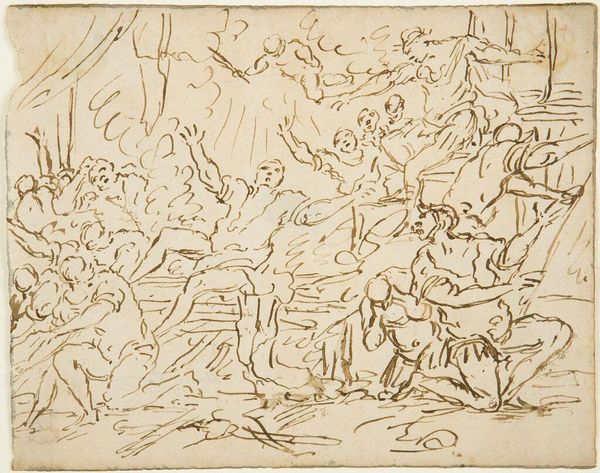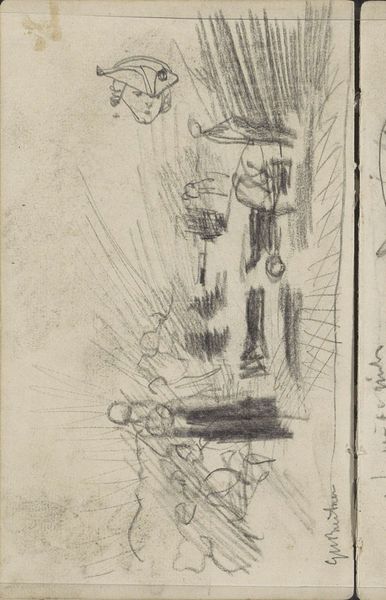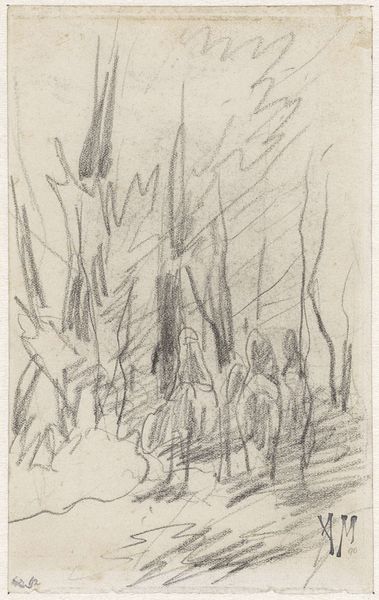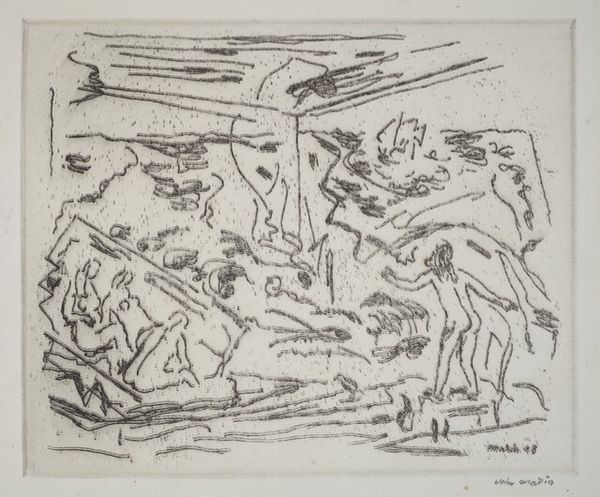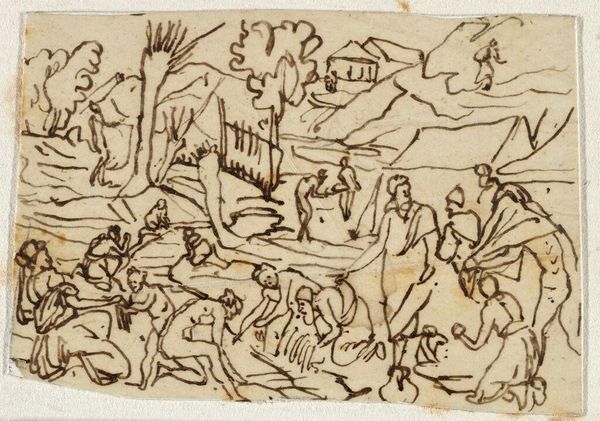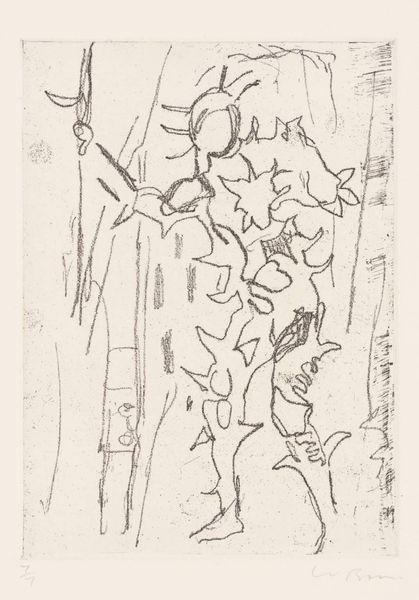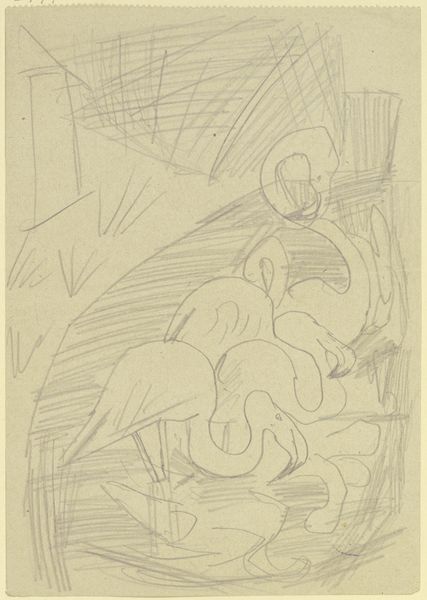
Copyright: © Leon Kossoff | CC-BY-NC-ND 4.0 DEED, Photo: Tate
Editor: Here we have Leon Kossoff's "The Lamentation over the Dead Christ (3)," part of the Tate Collection. The raw, almost frantic lines give it such a visceral feeling. What social commentary do you see embedded within Kossoff's reinterpretation of this biblical scene? Curator: Think about Kossoff as a London painter, grappling with the aftermath of war. This isn't just religious grief, but perhaps reflects the communal trauma and the feeling of loss experienced by a society rebuilding itself. How does the lack of idealization contribute to this? Editor: It feels like the figures are stripped bare, revealing a raw vulnerability. Curator: Exactly. It moves beyond the purely religious, echoing the struggles of the working class and marginalized communities who often face disproportionate suffering and are overlooked in canonical representations. It is a powerful, political statement. Editor: So, Kossoff uses a classic religious scene to reflect contemporary societal wounds. Thank you. Curator: And through that act, reclaims it for a different kind of suffering. It's about recognizing whose stories are told and whose are ignored.
Comments
tate 6 months ago
⋮
http://www.tate.org.uk/art/artworks/kossoff-the-lamentation-over-the-dead-christ-3-p11723
Join the conversation
Join millions of artists and users on Artera today and experience the ultimate creative platform.
tate 6 months ago
⋮
This print is one of many etchings executed by Leon Kossoff in response to, and literally in the presence of, oil paintings by old masters; in this case The Lamentation over the Dead Christ, about 1635, by Rembrandt Harmenszoon van Rijn (1606-69), owned by the National Gallery, London. This print was never published as an edition; Tate owns the second trial proof.

